
August 11th

August
11th
 We
took the Tube to the historic Somerset
House, a Palladian-style former palace designed by William
Chambers in 1775. It has an immense Fountain Court that unfortunately
wasn't running while we were there. It also houses two galleries, the
Cortauld
Institute Gallery and the Gilbert
Collection. At the Cortauld Institute Gallery, we saw many famous
Impressionist and Post-Impressionist works, including: “The Bar at
the Folies Bergeres,” by Eduard Manet, “Self-Portrait with
Bandaged Ear,” by Vincent van Gogh, a later Manet copy of his
famous “Dejeuner sur l'herbe,” lots of Degas wax dancers and
racehorses, and a lovely Degas painting of two dancers. To get to the
20th century art, our main goal, we climbed to the top of
a spiral staircase. Then we worked our way down the staircase and
back through the centuries of art.
We
took the Tube to the historic Somerset
House, a Palladian-style former palace designed by William
Chambers in 1775. It has an immense Fountain Court that unfortunately
wasn't running while we were there. It also houses two galleries, the
Cortauld
Institute Gallery and the Gilbert
Collection. At the Cortauld Institute Gallery, we saw many famous
Impressionist and Post-Impressionist works, including: “The Bar at
the Folies Bergeres,” by Eduard Manet, “Self-Portrait with
Bandaged Ear,” by Vincent van Gogh, a later Manet copy of his
famous “Dejeuner sur l'herbe,” lots of Degas wax dancers and
racehorses, and a lovely Degas painting of two dancers. To get to the
20th century art, our main goal, we climbed to the top of
a spiral staircase. Then we worked our way down the staircase and
back through the centuries of art.
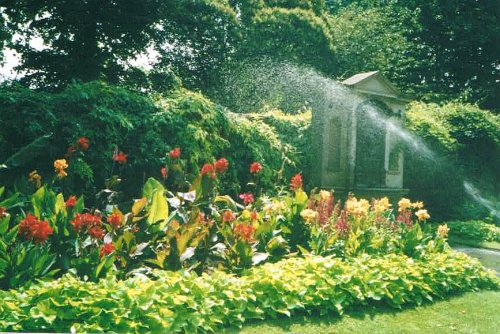 Also
at Somerset House, we saw the Gilbert Collection, created from fine
objects donated by Arthur Gilbert, an American businessman who was
born in London. There was a special exhibit on “The Art of Chess.”
The various chess sets were set up to display the moves of
“Napoleon's last game.” Some of the sets were quite unusual, like
Yoko Ono's all white set that you can play as long as you remember
whose side you're on, or the set with “good” figures like Martin
Luther King Jr. and Mother Theresa as the white pieces and “evil”
figures like Adolf Hitler as the black pieces.
Also
at Somerset House, we saw the Gilbert Collection, created from fine
objects donated by Arthur Gilbert, an American businessman who was
born in London. There was a special exhibit on “The Art of Chess.”
The various chess sets were set up to display the moves of
“Napoleon's last game.” Some of the sets were quite unusual, like
Yoko Ono's all white set that you can play as long as you remember
whose side you're on, or the set with “good” figures like Martin
Luther King Jr. and Mother Theresa as the white pieces and “evil”
figures like Adolf Hitler as the black pieces.
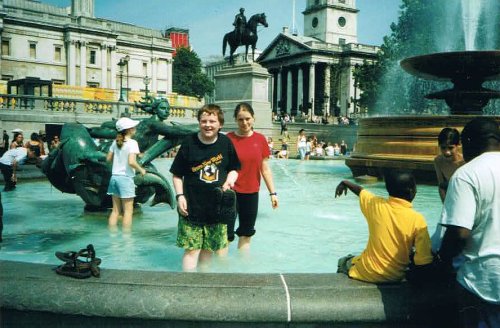 The
inlaid furniture and pictures were unbelievably gorgeous! There was
also an exhibit on silver, which included everything from silver
bread baskets to sterling silver chamber pots. The King's Barge was
displayed near the gate at Somerset House that once opened onto the
Thames (before the Embankment was created).
The
inlaid furniture and pictures were unbelievably gorgeous! There was
also an exhibit on silver, which included everything from silver
bread baskets to sterling silver chamber pots. The King's Barge was
displayed near the gate at Somerset House that once opened onto the
Thames (before the Embankment was created).
After viewing the collections of art and fine crafts, we walked through Embankment Park to Trafalgar Square, where we met Russell's friend for lunch at an Italian restaurant. Trafalgar Square was designed by John Nash early in the 19th century, and features Nelson's Column, which commemorates Admiral Horatio Nelson's victory over Napoleon off Cape Trafalgar in 1805. Trafalgar Square used to be overrun by cars, but the mayor of London set aside the northern part as a pedestrian plaza in 2003. Because of the hot weather, there were a number of people splashing and swimming in the Trafalgar Square fountains while the lions looked on in disapproval. There is a scene in P. G. Wodehouse's “Jeeves and the Mating Season” in which a wimpy character, Augustus Fink-Nottle, is arrested for searching for newts in the Trafalgar Square fountain. Luckily, we escaped his fate.
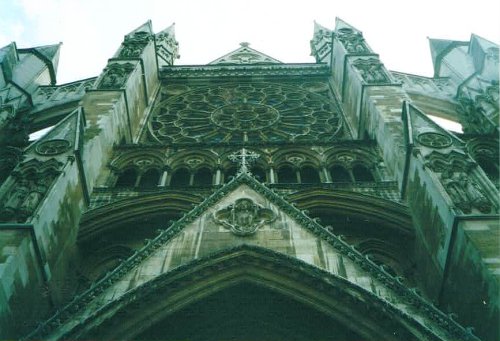
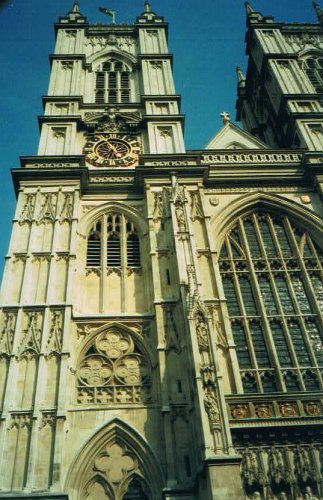 After
lunch, and another dip in the fountains, we walked from Trafalgar
Square past the Houses of Parliament on our way to Westminster
Abbey. It's one of the most gorgeous buildings we have ever seen,
and one of the oldest and most important buildings in London. The
Early English Gothic-style abbey was originally built by Edward the
Confessor in the 11th century, who is buried in the chapel
behind the main altar. Every English monarch except Edward V and
Edward VI has been crowned there since the days of William the
Conquerer in 1066. We saw the Coronation Chair on which they sat.
From Henry III to George II, all of the English monarchs were buried
there as well. We saw the tombs of Queen Elizabeth I, Mary I, Mary
Queen of Scots, Henry III, Henry V, Henry VII, Richard II, Edward I,
and many notable scientists, authors, poets, playwrights, exploeres,
and leaders, including Geoffry Chaucer, Charles Dickens, Edward
Elgar, and Winston Churchill. Many people were buried under the
floors, while others had magnificent mausoleums and still others were
merely honored with monuments in the Abbey.
After
lunch, and another dip in the fountains, we walked from Trafalgar
Square past the Houses of Parliament on our way to Westminster
Abbey. It's one of the most gorgeous buildings we have ever seen,
and one of the oldest and most important buildings in London. The
Early English Gothic-style abbey was originally built by Edward the
Confessor in the 11th century, who is buried in the chapel
behind the main altar. Every English monarch except Edward V and
Edward VI has been crowned there since the days of William the
Conquerer in 1066. We saw the Coronation Chair on which they sat.
From Henry III to George II, all of the English monarchs were buried
there as well. We saw the tombs of Queen Elizabeth I, Mary I, Mary
Queen of Scots, Henry III, Henry V, Henry VII, Richard II, Edward I,
and many notable scientists, authors, poets, playwrights, exploeres,
and leaders, including Geoffry Chaucer, Charles Dickens, Edward
Elgar, and Winston Churchill. Many people were buried under the
floors, while others had magnificent mausoleums and still others were
merely honored with monuments in the Abbey.
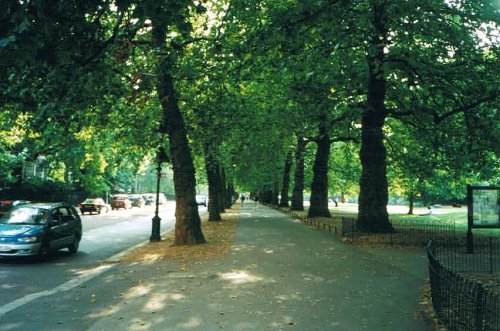 Then
we walked to St. James Park to enjoy the shade and a cooling breeze
off the lake. There were ducks, geese, coots, and other birds, as
well as a number of cheeky squirrels. At the far end of St. James
Park is Buckingham
Palace, the royal residence. It was built in 1803 for the Duke of
Buckingham. We did not see the Changing of the Guard there, but we
did see the Queen Victoria Memorial. St. James Park was a wonderful
place to spend time after a long and tiring day.
Then
we walked to St. James Park to enjoy the shade and a cooling breeze
off the lake. There were ducks, geese, coots, and other birds, as
well as a number of cheeky squirrels. At the far end of St. James
Park is Buckingham
Palace, the royal residence. It was built in 1803 for the Duke of
Buckingham. We did not see the Changing of the Guard there, but we
did see the Queen Victoria Memorial. St. James Park was a wonderful
place to spend time after a long and tiring day.
